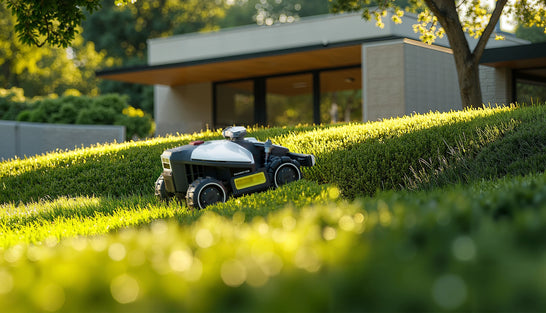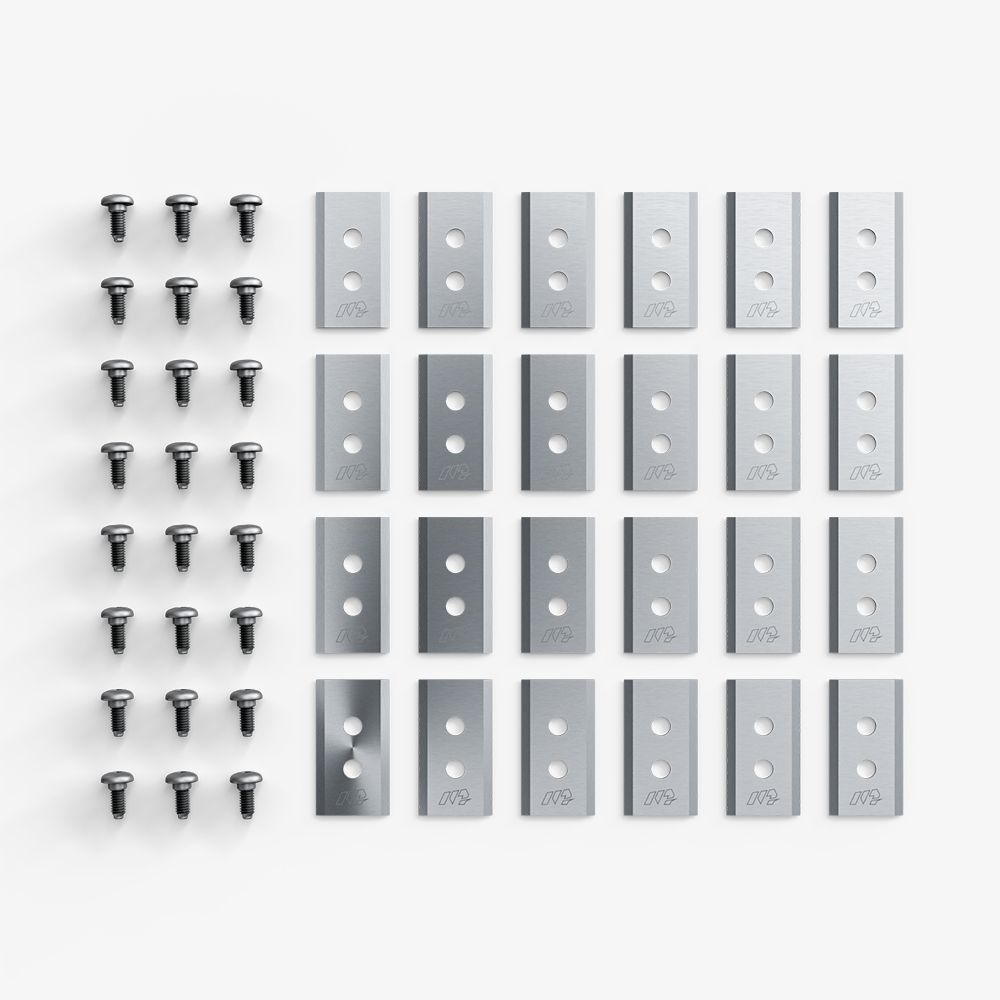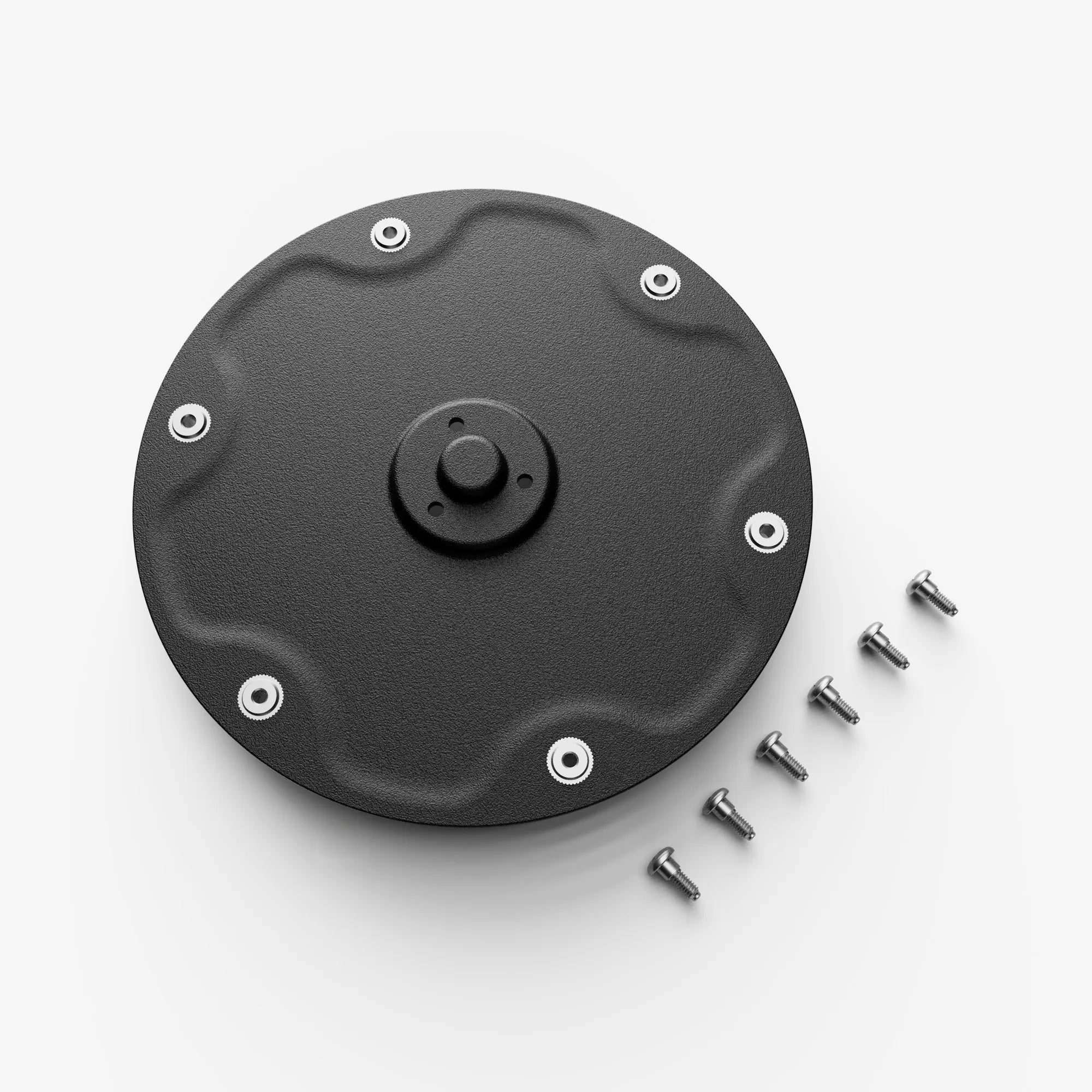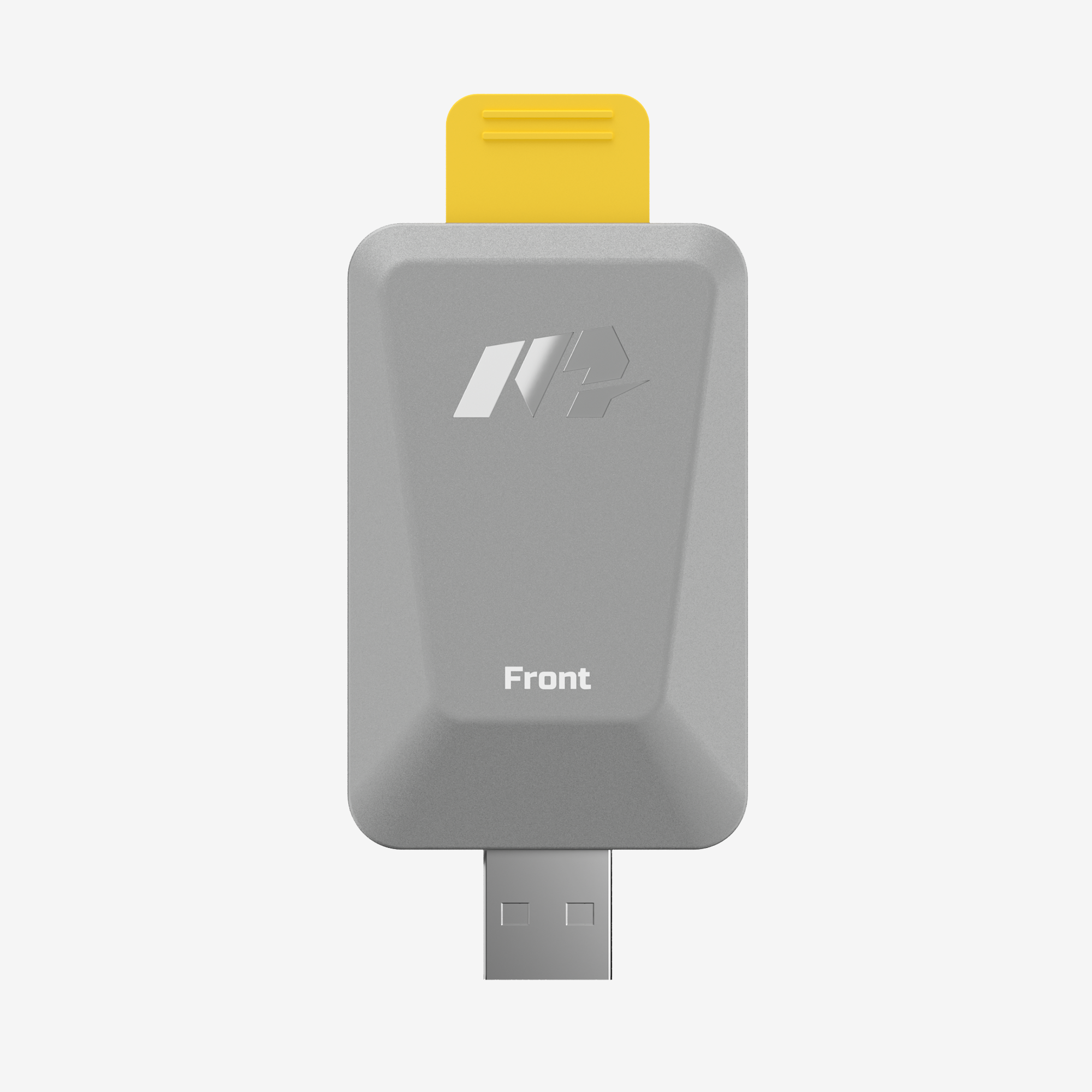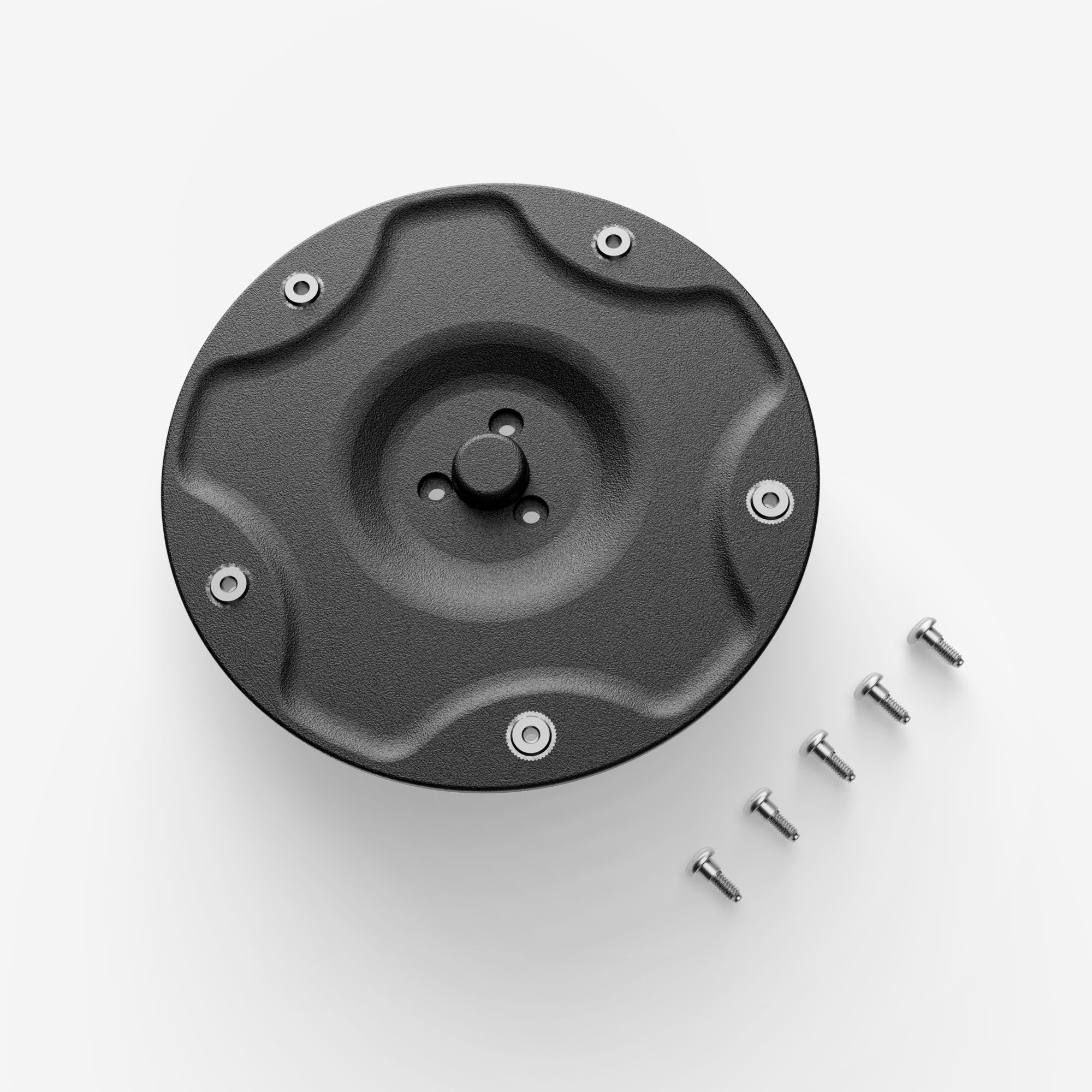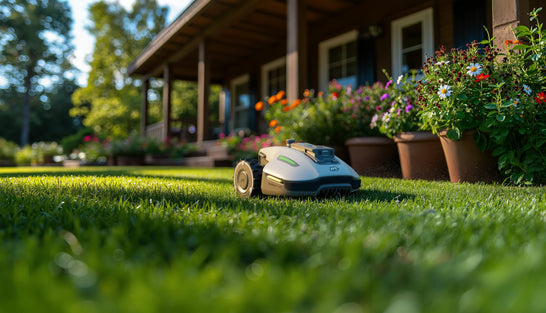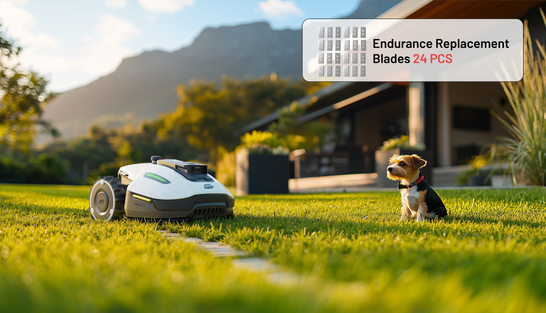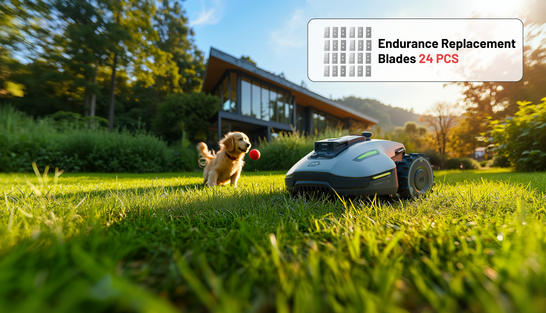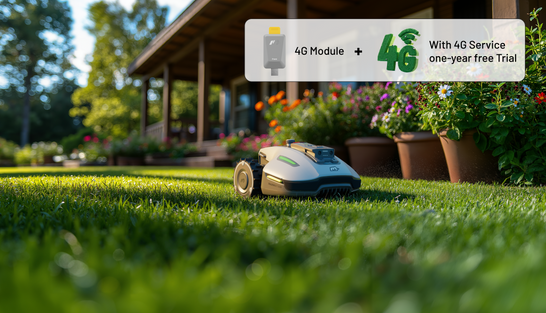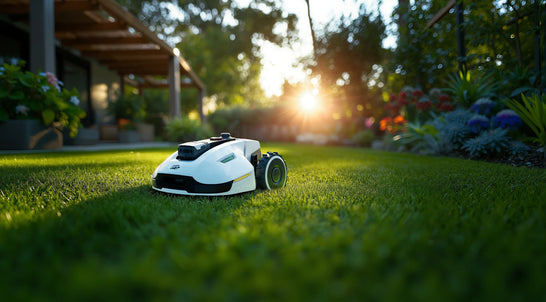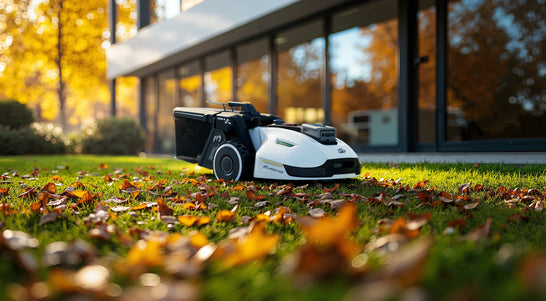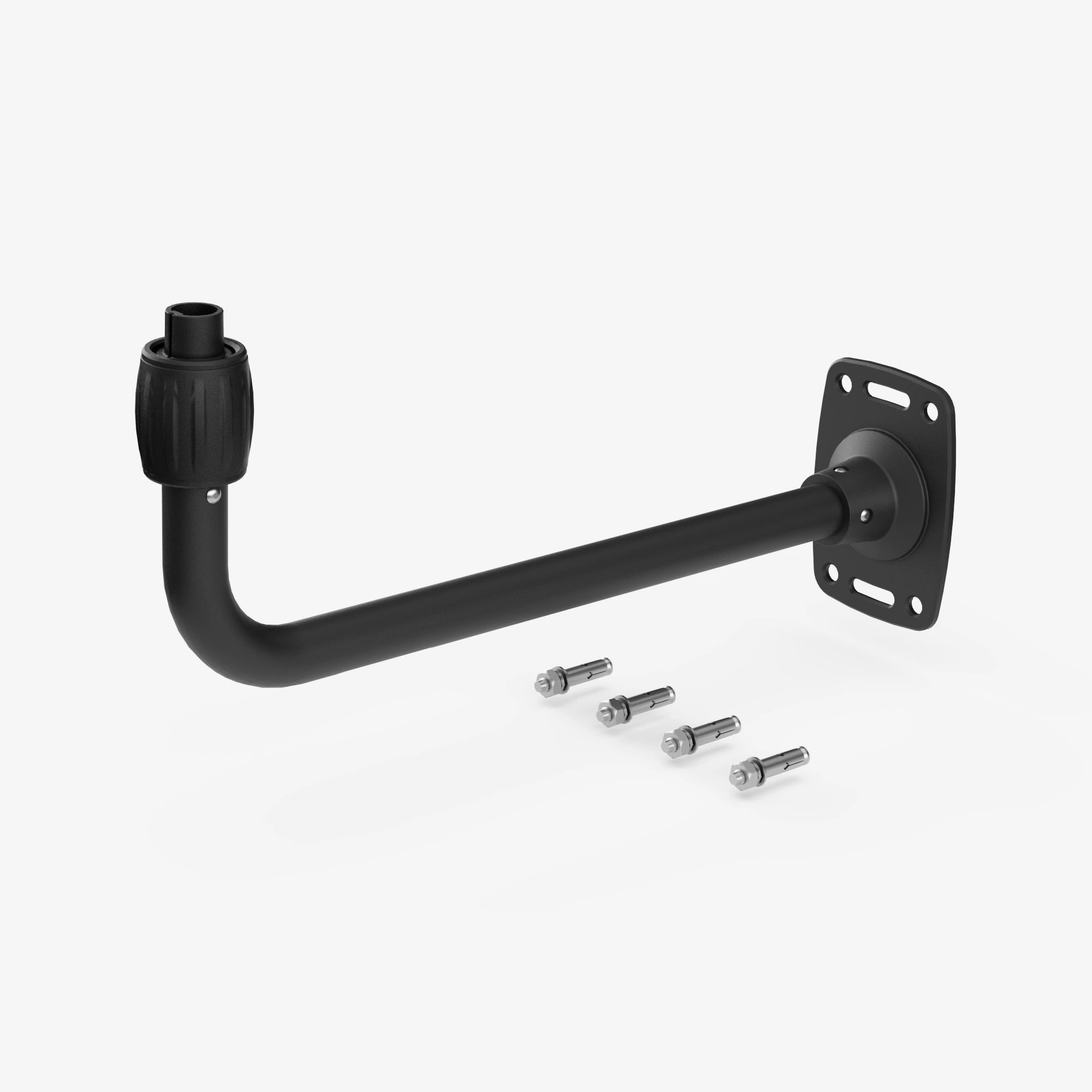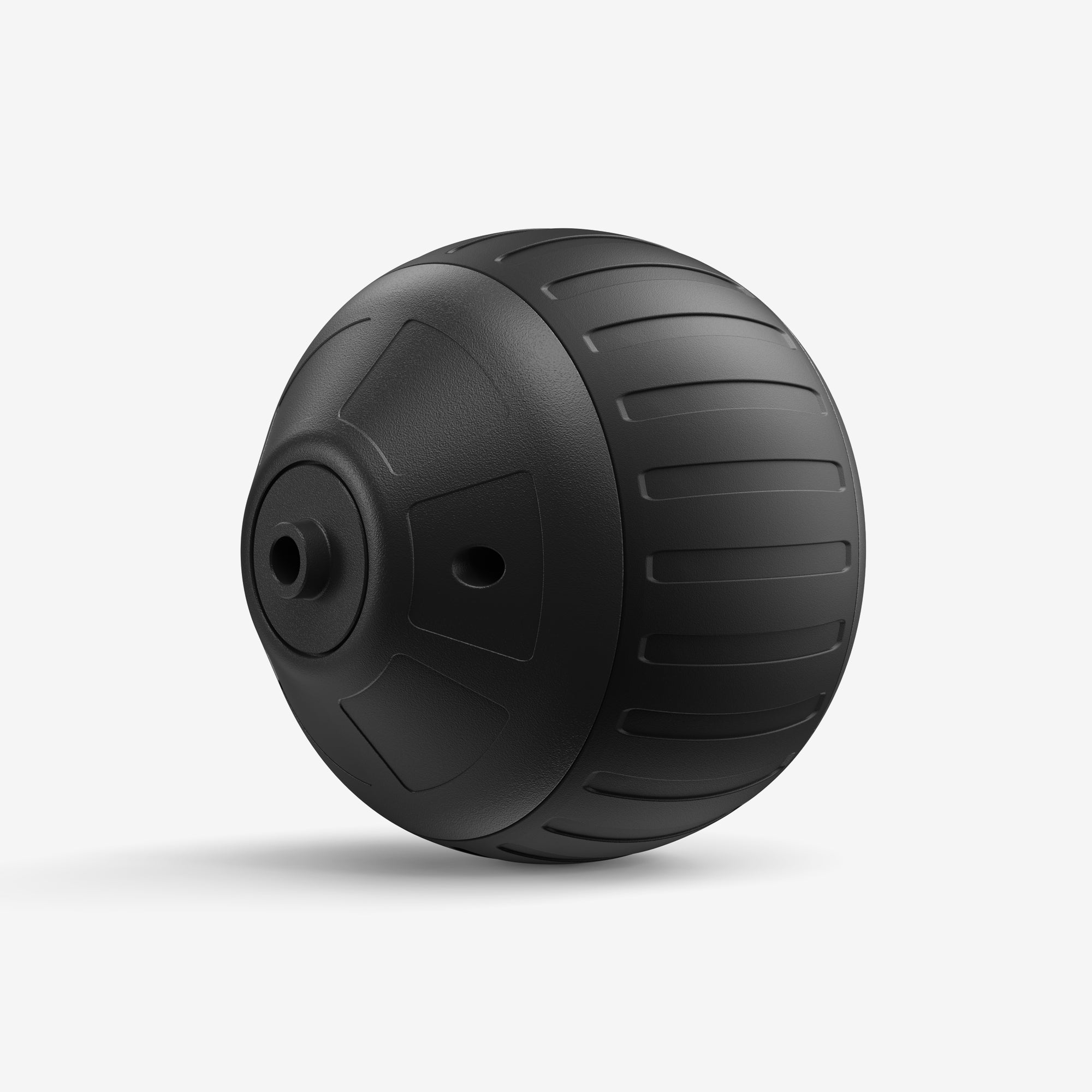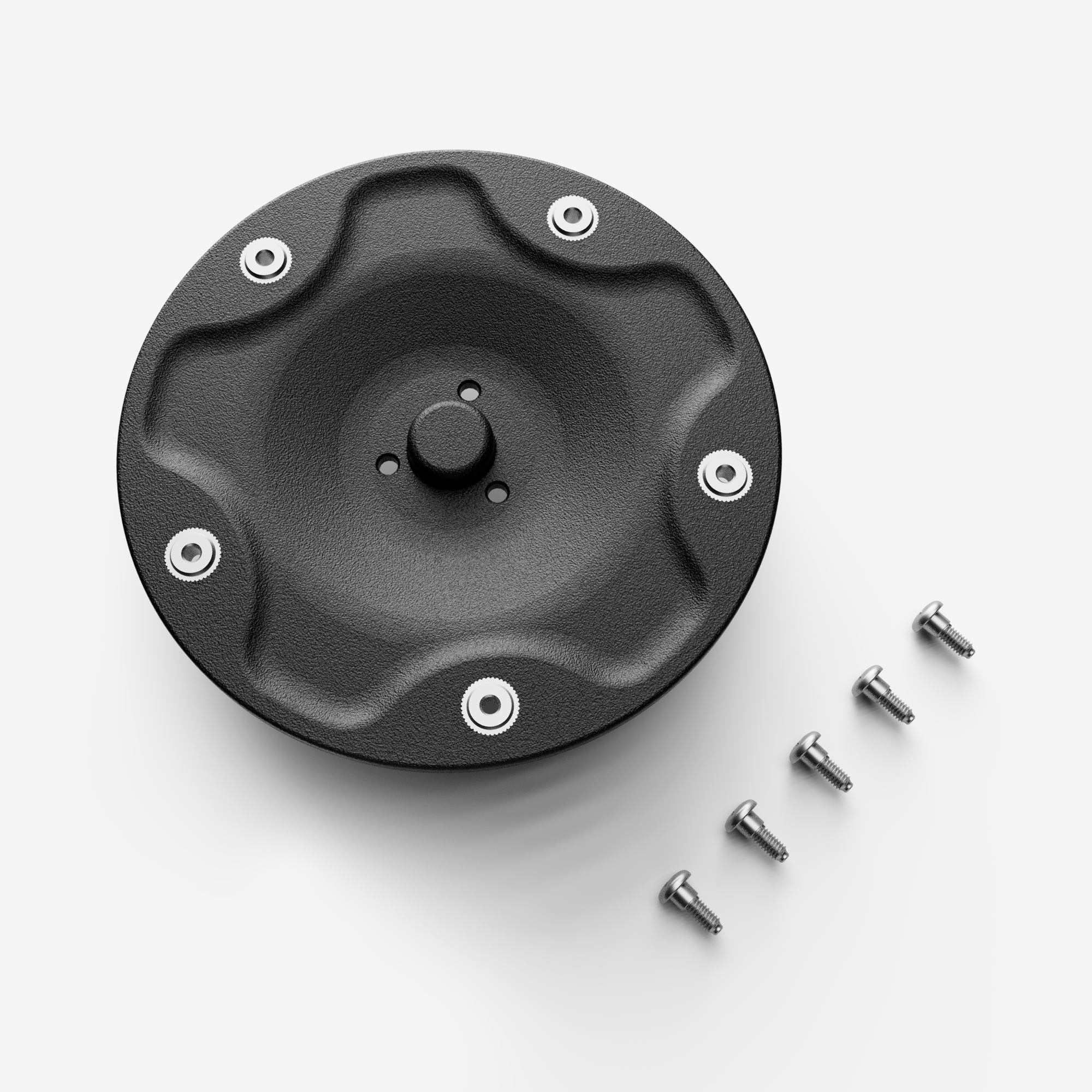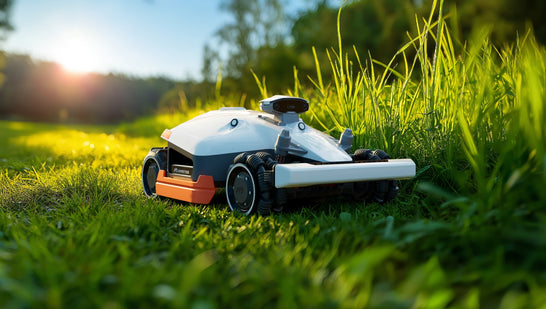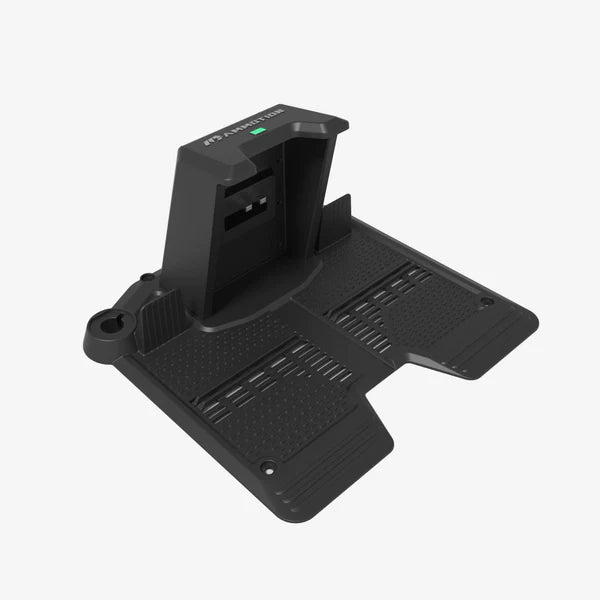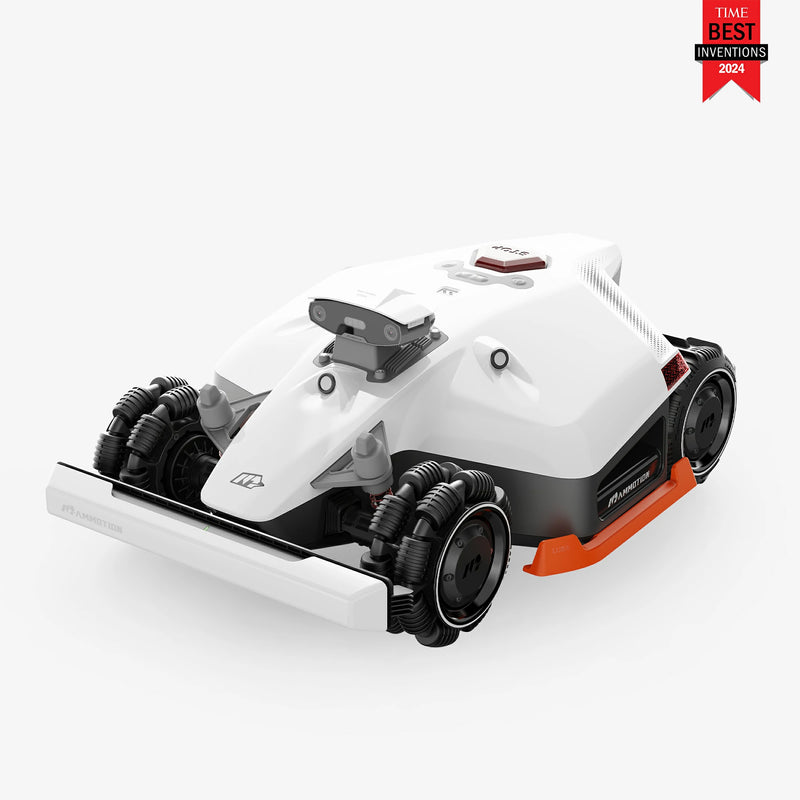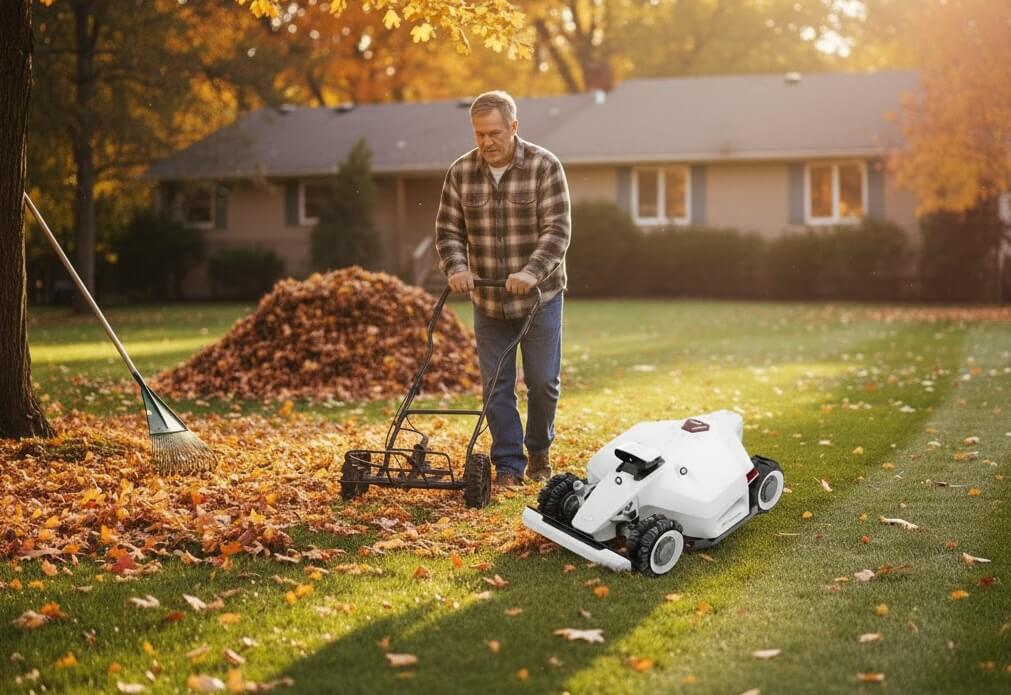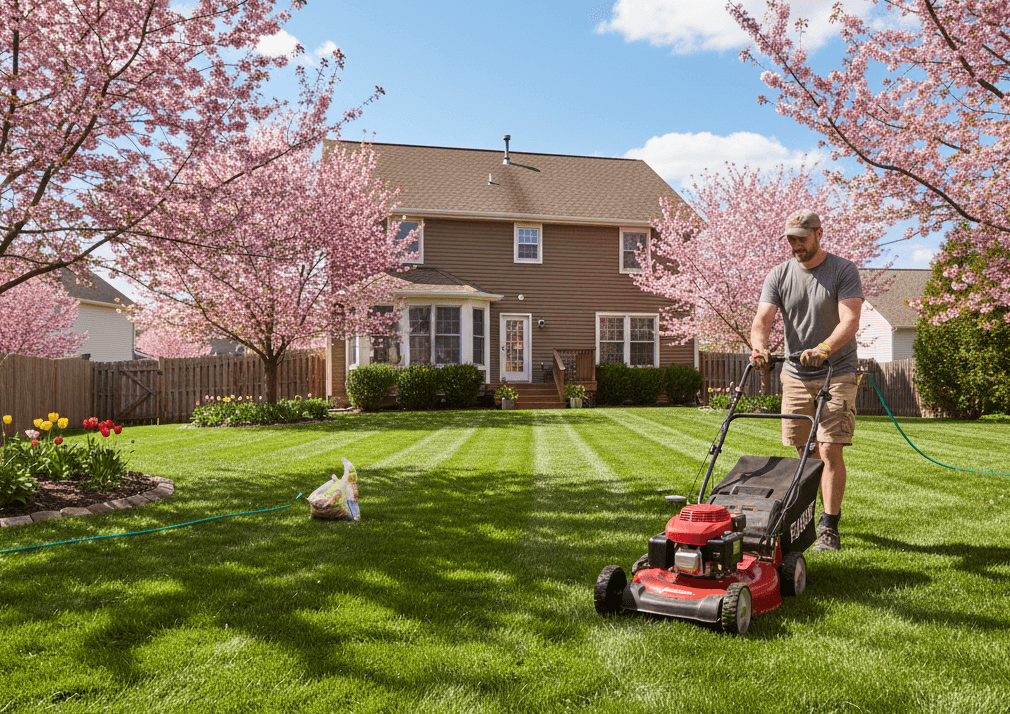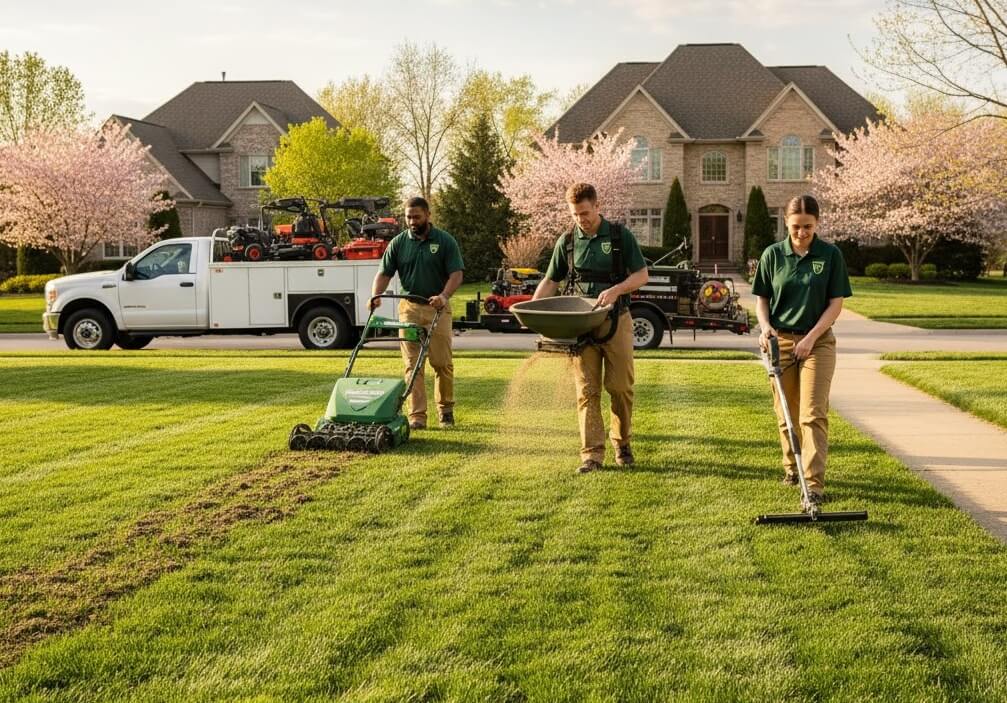Having a lush, green lawn isn’t just about aesthetics—it’s a sign of a healthy yard. Regular mowing plays a crucial role in maintaining grass health, promoting strong root systems, and preventing the spread of weeds. However, improper mowing practices can do more harm than good, leaving your lawn stressed, patchy, or vulnerable to pests and diseases.
Mowing mistakes, however, can lead to issues like uneven growth, weak roots, and susceptibility to diseases. By learning how to mow a lawn the right way, you’ll not only improve your yard’s appearance but also create an environment where grass thrives naturally.
This guide will walk you through step-by-step instructions, essential tips, and common pitfalls to avoid, helping you transform your lawn care routine for the better. Let’s get started!
Step-by-Step Guide to Mowing a Lawn
Proper mowing techniques can make all the difference between a patchy lawn and a lush, thriving one. Below is a step-by-step guide that will help you mow your lawn like a pro:
Step 1: Get Your Mower Ready
Before starting, ensure your lawn mower is in top condition for an efficient cut.
- Inspect the mower: Check that the blades are sharp, fuel or battery levels (robot mower) are sufficient, and all components are functioning properly. Dull blades can tear grass rather than cutting it cleanly, which may lead to brown edges and stress on the lawn.
- Clear the area: Remove sticks, stones, and other debris from the grass. These can damage your mower or cause safety hazards.
Pro Tip: Regularly maintaining your mower, including cleaning the underside and sharpening the blade, not only ensures better mowing results but also extends the life of the machine.
Step 2: Set the Right Mowing Height
Different grass types thrive at different heights, so understanding your lawn’s needs is crucial.
- Cool-season grasses like Kentucky Bluegrass or Fescue should be mowed to a height of 2–3 inches.
- Warm-season grasses such as Bermuda or Zoysia prefer a shorter cut of 1–2 inches.
- Follow the "1/3 rule": Never cut more than the top 1/3 of the grass blade in one mowing session. This prevents scalping, which can weaken the grass and make it vulnerable to weeds and pests.
Step 3: Mow at the Right Time
Timing your mowing sessions can impact both the health of your lawn and the efficiency of your effort.
- Best time to mow: Late afternoon or early evening. This avoids the midday heat, which can stress both the grass and the mower. For optimal results, learn how to mow a lawn during the evening when the grass is dry and less stressed by heat.
- Avoid wet grass: Mowing a damp lawn can lead to uneven cuts and cause clumps of clippings to smother the grass. Wait until the grass is dry to achieve a cleaner result.
Step 4: Mow in Patterns
Switching up your mowing pattern is an easy way to improve the health and appearance of your lawn.
- Change direction: Alternate between vertical, horizontal, and diagonal mowing patterns each time. This prevents the grass from leaning in one direction and helps avoid creating ruts in the soil.
- Overlap slightly: Ensure your mower’s wheels overlap slightly with the previous pass to avoid leaving uncut strips of grass.
Fun Fact: Mowing in varied patterns also gives your lawn a professional, striped look seen on golf courses and sports fields.
Step 5: Leave Grass Clippings on the Lawn
Instead of bagging or removing clippings, let them decompose naturally to benefit the soil.
- Nutrient recycling: Grass clippings return essential nutrients like nitrogen to the soil, acting as a natural fertilizer.
- Keep clippings small: Mow frequently enough that the clippings are short and can decompose quickly. If they clump or form rows, rake them to distribute evenly or compost them.
Pro Tip: If you use a mulching mower, it will finely chop the clippings, making them easier to break down and less likely to form clumps.
Tips for Special Situations
While routine mowing is essential, certain scenarios require special care. Here’s how to handle them effectively:
1. Mowing a New Lawn
Seeded Lawns: Wait until the grass reaches 3–4 inches in height before the first mow. Trim only the top 1/3 of the blades to avoid stressing the young plants.
Sodded Lawns: Allow 2–3 weeks for the sod to root firmly into the soil. Test its readiness by tugging gently—if it resists, it’s ready to mow. Keep the mower height above 2 inches for the first few sessions to avoid damaging the new grass.
Careful mowing during the early stages helps establish a strong, healthy lawn.
2. Shaded Areas Grasses
Grass in shaded areas grows differently than in full sunlight.
- Mow these sections slightly higher to encourage deeper root growth, which helps the grass compete for limited water and nutrients.
- Reduce traffic in shaded areas to minimize stress on the grass.
- Taller grass in shaded zones ensures a fuller, greener lawn in challenging spots.
3. Mow During Hot or Dry Weather
Extreme heat or drought conditions require adjustments to your mowing routine.
- Raise the mowing height to provide shade for the soil and retain moisture.
- Mow less frequently, allowing the grass to grow longer to withstand stress.
- Adapting your approach during harsh weather protects the lawn and maintains its resilience.
Common Mistakes to Avoid When Mowing
Even with the best intentions, improper mowing practices can harm your lawn. Here are some common pitfalls to steer clear of:
1. Cutting the Grass Too Short ("Scalping")
Scalping weakens the grass by removing too much of its blade, leaving it unable to photosynthesize effectively. Short grass exposes soil to the sun, encouraging weeds and reducing moisture retention.
Solution: Follow the "1/3 rule"—only remove the top third of the grass blade at a time. Set your mower height according to your grass type.
2. Mowing Infrequently
Letting the grass grow too tall makes mowing more challenging and leaves clumps of grass that can smother the lawn.
Solution: Mow regularly, adjusting frequency based on growth rate. During peak growing seasons, this might mean mowing weekly or even twice a week. Consistent mowing keeps your lawn looking neat and healthy.
3. Using a Dull Mower Blade
Dull blades tear grass rather than cutting it cleanly, resulting in ragged edges that turn brown and make the lawn susceptible to disease.
Solution: Sharpen mower blades at least once a year or as soon as you notice uneven cuts. A sharp blade is key to maintaining a vibrant lawn.
4. Ignoring Mowing Patterns
Mowing in the same direction every time creates ruts in the lawn and causes grass to lean, leading to uneven growth.
Solution: Change your mowing pattern regularly—alternate between horizontal, vertical, and diagonal cuts. Varied patterns promote upright grass growth and a more uniform appearance.
5. Mowing Wet Grass
Wet grass clumps together, leaving uneven cuts and clogging your mower. It can also lead to soil compaction and brown patches.
Solution: Wait for the grass to dry before mowing. Early evening, when the sun is less intense and grass is dry, is an ideal time. Avoiding wet mowing ensures a cleaner cut and prevents damage.
Final Thoughts
Mowing your lawn may seem like a routine task, but doing it correctly can transform your yard into a lush, healthy, and beautiful space. By following proper mowing techniques—such as setting the right blade height, mowing at optimal times, and varying your patterns—you not only improve your lawn's appearance but also promote its long-term health.
Remember, small changes like leaving grass clippings on your lawn, maintaining sharp mower blades, and adjusting practices for special situations can make a big difference. Every yard is unique, so take the time to understand your grass type and seasonal needs.
Ready to get started? Equip yourself with these tips, and you’ll have a yard that’s the envy of the neighborhood in no time!
If you found this guide helpful, share it with fellow lawn enthusiasts or bookmark it for future reference. For more lawn care advice and tips, check out additional resources or subscribe to our newsletter.
Your beautiful lawn awaits—happy mowing!

